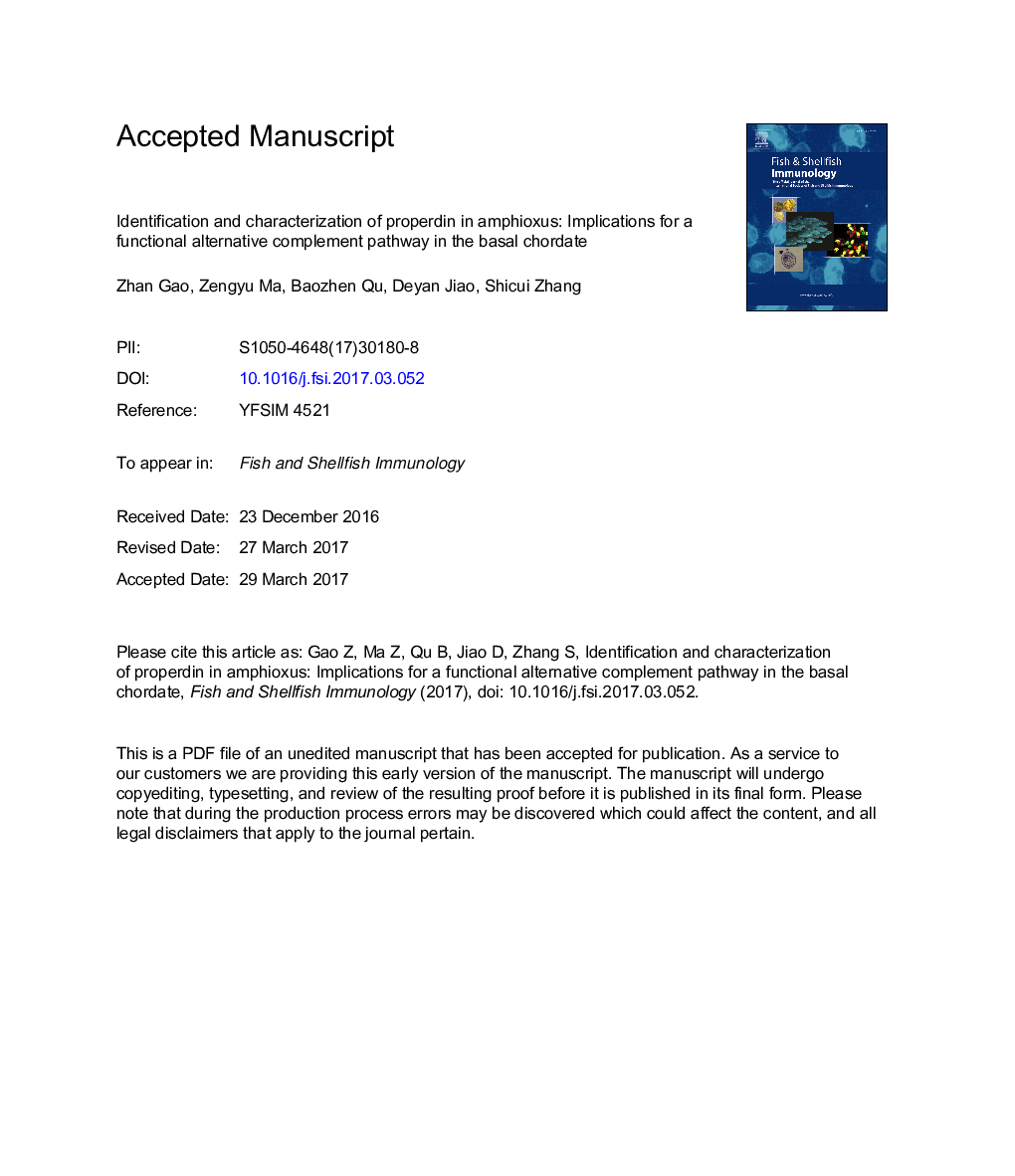| Article ID | Journal | Published Year | Pages | File Type |
|---|---|---|---|---|
| 5540461 | Fish & Shellfish Immunology | 2017 | 32 Pages |
Abstract
A complement system operating via the alternative pathway similar to that of vertebrates has been demonstrated in the primitive chordate amphioxus. However, the factor P (fP), a positive regulator of the alternative pathway, remains elusive in amphioxus to date. In this study, we identified and characterized a properdin gene in the amphioxus B. japonicum, BjfP, which represents an archetype of vertebrate properdins. Real-time PCR analysis showed that the BjfP was ubiquitously expressed and its expression was significantly up-regulated following the challenge with bacteria or lipopolysaccharide (LPS) and lipoteichoic acid (LTA). Recombinant BjfP (rBjfP) and its truncated proteins including rTSR1-3, rTSR4-6 and rTSR7-8, were all capable of interacting with both Gram-negative and positive bacteria as well as LPS and LTA. Moreover, rBjfP, rTSR1-3 and rTSR4-6 could also specifically bind to C3b. Importantly, both rTSR1-3 and rTSR4-6 could inhibit the binding of rBjfP to C3b, and thus suppress the activation of the alternative pathway of complement, suggesting the involvement of BjfP in the alternative pathway. This is the first report showing that a properdin protein in invertebrates plays similar roles to vertebrate properdins. Collectively, these data suggest that BjfP might represent the ancient molecule from which vertebrate properdins evolved.
Related Topics
Life Sciences
Agricultural and Biological Sciences
Aquatic Science
Authors
Zhan Gao, Zengyu Ma, Baozhen Qu, Deyan Jiao, Shicui Zhang,
